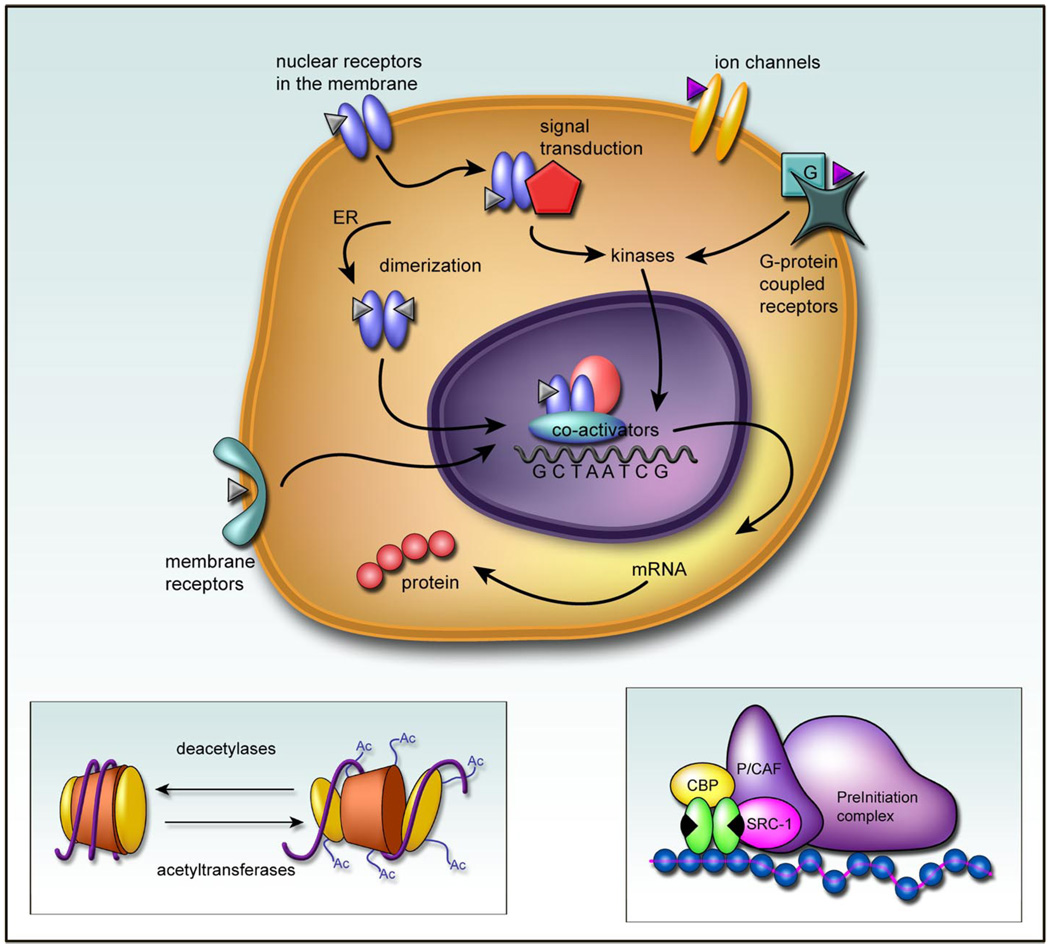FIG 1.
A multiplicity of estradiol actions. Receptors for estradiol are members of a nuclear targeted transcription factor superfam-ily. Upon binding, the receptors dimerize and are translocated to the nucleus where they associate with coactivators such as steroid receptor coactivator 1 (SRC-1) and CREB binding protein (CBP) and form part of a preinitiation complex for inducing transcription. A critical function of this complex is the acetylation of histones on the chromatin to relax the DNA helix and allow for association with the palindromic sequences that constitute the estrogen response element (ERE). In addition to this long-term genomic effect of estradiol, the ER has been associated with the cell membrane of neurons where it can interact directly with signal transduction pathways such as that involving mitogen-activated protein kinase. Estradiol has also been reported to directly affect ion channels and G proteincoupled receptors, independent of the estrogen receptor (ER), and there may be a novel membrane-bound receptor for estradiol distinct from the classic ER’s, but this remains unsettled.

